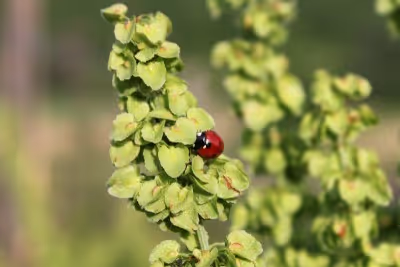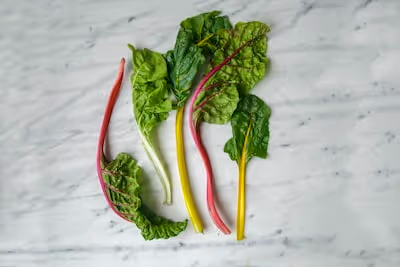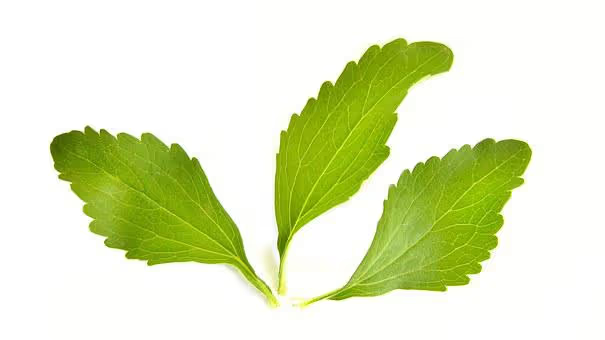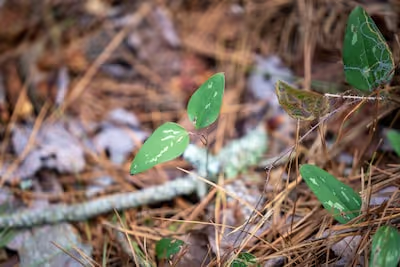Growing Swiss Chard: How to Plant, Grow, and Harvest at Home

Growing Swiss Chard
Growing Swiss Chard starts by sowing seeds directly into rich, fertile soil in early spring, spaced about six inches apart. While growing Swiss chard, water regularly and provide full sun to encourage vibrant, tender leaves. Mulching around plants keeps moisture consistent and weeds at bay, giving your chard room to flourish. Follow along for simple tips to bring this colorful, leafy beauty straight from garden to plate.
Cheatsheet: Swiss Chard Growing Made Simple
🌱 Choose the Right Spot
- Sun: 4–6 hours daily (partial shade OK)
- Soil: Loamy, well-drained, pH 6.0–7.0
🌡️ Sow and Spacing
- Plant in spring, soil 50–85°F (10–29°C)
- Sow seeds 1/2 in. (1.2 cm) deep, 4–6 in. (10–15 cm) apart
- Rows: 18 in. (45 cm) apart
- Thin for 8–10 in. (20–25 cm) spacing
🛠️ Tools and Products You’ll Need
- Garden trowel
- Watering can or hose
- Gloves
- Mulch (optional, for moisture retention)
- Swiss chard seeds
- Compost or balanced fertilizer
💧 Care and Feeding
- Keep soil evenly moist—avoid sogginess
- Mulch to retain water, suppress weeds
- Fertilize light feeder: monthly with compost or 10-10-10 NPK
- Pick pests off by hand; use row covers for leaf miners
🔪 Harvest and Keep It Going
- Baby leaves: Trim at 3–4 in. (8–10 cm), 30 days
- Mature leaves: Cut outer leaves at base, 50–60 days
- Never cut central stem; allows for continual harvest
- Harvest regularly: triggers new growth
🥗 Nutrition & Self-Sufficiency
- Rich in vitamins A, K, C, magnesium, iron
- Grows year-round in frost-free zones
- Cut-and-come-again = high yield from one planting
📊 Fast Facts
- 1 m2 can supply a family with greens for months
- 50% more vitamin K than spinach per serving
- Heat-tolerant: resists bolting
-
Growing Swiss Chard: How to Plant, Grow, and Harvest at Home
I grow Swiss chard for color, stamina, and the way it forgives my occasional neglect. It keeps feeding the kitchen while fussier greens sulk.
Why Swiss chard belongs in your beds and pots
Beta vulgaris subsp. cicla handles cool springs and steady summer heat better than most leafy greens. It shrugs off light frost and bounces back fast after picking.
"Chard tolerates light frosts, often down to about 20 F (-6 C) with cover," notes Colorado State University Extension.
The leaves sauté like spinach, the stems eat like tender celery. That two-for-one harvest stretches a small garden.
Varieties I rate for flavor, color, and staying power
- ‘Fordhook Giant’: big savoyed leaves, steady in heat, classic for bunching.
- ‘Bright Lights’: neon stems from gold to magenta, good texture, photogenic in market crates.
- ‘Rhubarb’: red stems and veins, richer flavor when nights run cool.
- ‘Lucullus’: pale green, broad ribs, reliable in shoulder seasons.
- ‘Peppermint’: pink and white candy stripes, tender stems.
- ‘Orange Fantasia’: citrus-colored stems, tidy habit in containers.
For containers, I favor ‘Bright Lights’ and ‘Orange Fantasia’ for compact crowns. For bulk leaf, ‘Fordhook Giant’ wins in my trials.
Timing, temps, and daylength
Sow outdoors as soon as soil warms to 50 F (10 C), then succession sow every 3 weeks until midsummer. In hot regions, plant again in late summer for a lush fall crop.
Germination likes 70 to 80 F (21 to 27 C). Growth hums along at 55 to 75 F (13 to 24 C), and plants hold up into light freezes with a fabric cover.
Soil prep that pays
Chard likes sun and fertile, well drained soil with pH 6.2 to 7.2. I work in 1 to 2 inches (2.5 to 5 cm) of finished compost and a balanced organic fertilizer around 5-5-5 before planting.
It appreciates nitrogen for leaf production, but too much pushes soft growth that invites pests. I side-dress lightly with compost or fish hydrolysate midseason.
Direct sow vs transplants
I direct sow for speed, yet I also start a tray for insurance against slugs and erratic spring weather. Both routes produce fine plants.
Seed depth should be 0.5 inch (1.3 cm). The “seed” is a corky cluster, so expect to thin.
- Direct sow spacing: 2 inches (5 cm) in-row for baby leaf, thin to 8 to 12 inches (20 to 30 cm) for full-size bunching.
- Row spacing: 12 to 18 inches (30 to 46 cm), or two offset lines per 30-inch (76 cm) bed.
- Transplants: start 4 to 6 weeks before last frost, harden off for 5 to 7 days, set out with the crown at soil line.
I often soak seed 12 hours to speed sprouting, then sow into moist, crumbly soil. Thin early and eat the thinnings.
Water, mulch, and feeding
Target 1 inch (25 mm) of water per week, more in heat, delivered at the soil line. Uneven moisture toughens stems and turns flavor muddy.
Mulch with chopped leaves or straw to steady moisture and cool roots. I topdress with compost every 6 to 8 weeks for a slow, clean feed.
Container growing that actually works
Use at least 5 gallons (19 L) per plant for full-size, or a 12 to 14 inch (30 to 36 cm) wide pot for 2 to 3 plants grown smaller. A peat-free, well aerated mix with added compost keeps roots lively.
Feed a gentle liquid every 10 to 14 days, keep the crown above the media, and rotate the pot for even leaf color. Containers dry out fast in wind, so mulch the surface.
Companions and crop rotation
I tuck chard beside onions, basil, calendula, and dill to confuse pests and invite hoverflies. I avoid following beets, spinach, or other chard for at least 2 years to cut disease carryover.
Swiss chard sits in the beet family, so treat rotation like root crops. Clean up senescent leaves to foil fungal spores.
Pests, diseases, and simple IPM
- Leaf miners: pale squiggles inside leaves from beet leafminer larvae. Use row cover from emergence, remove and trash mined leaves, and skip planting near last year’s spinach or beets.
- Aphids: rinse with a firm spray, encourage lady beetles and lacewings, and avoid overfeeding nitrogen.
- Flea beetles: floating row cover, trap crops like radish, and keep mulch intact to reduce dust baths.
- Slugs and snails: beer traps, hand-picking at dusk, and sharp grit around crowns.
- Leaf spots like Cercospora: water at soil level, widen spacing, and remove spotted leaves early.
University and state IPM guides back these tactics, and they match what I see in field blocks. Prevention beats rescue sprays every time.
Harvest methods for steady salads and sautés
For baby leaf, start in 25 to 30 days, cut 1 to 2 inches (2.5 to 5 cm) above the crown with a sharp knife. For full-size, begin 45 to 60 days, taking the outer leaves and leaving the growing point.
I harvest in the cool morning for crisp texture. Stems go to a skillet, leaves to the plate, and the plant rebounds in a week.
"Swiss chard is a biennial grown as an annual," notes University of Minnesota Extension. Expect bolting in the second season after winter cold and lengthening days.
Postharvest handling and storage
Rinse, shake dry, and chill in a perforated bag at 34 to 38 F (1 to 3 C) for up to a week. For longer storage, blanch stems and leaves separately for 2 minutes, then freeze.
A quick soak in cold water revives slightly wilted leaves. Avoid crushing stems in the fridge to prevent bruising.
Overwintering and season extension
In zones 7 to 9, chard often grows year-round with a low tunnel or cold frame. In zones 5 to 6, heavy mulch and fabric cover carry plants through many nights to 15 to 20 F (-9 to -6 C).
Expect fresh growth at the first thaws, then bolting as days lengthen. I let one plant flower to feed pollinators and save seed from an isolated block.
Nutrition and kitchen notes
USDA data shows chard delivers abundant vitamin K along with vitamin A, magnesium, and potassium at very low calories. I treat stems as a separate vegetable, braising them with garlic and lemon until silky.
Leaves handle high heat without collapsing into mush. A squeeze of citrus tames the mineral bite that shows up in midsummer.
Top mistakes to skip
- Letting plants dry out, which toughens midribs and invites leaf miner damage.
- Planting too tight, which fuels mildew and leggy stems.
- Harvesting the crown by accident, which stalls regrowth for weeks.
- Overfeeding nitrogen, which draws aphids and encourages floppy leaves.
- Skipping rotation, which stacks disease pressure year to year.
Quick spec sheet for Growing Swiss Chard
- Soil pH: 6.2 to 7.2
- Seed depth: 0.5 inch (1.3 cm)
- Spacing: 8 to 12 inches (20 to 30 cm) for full-size
- Water: 1 inch per week (25 mm), more in heat
- Days to baby leaf: 25 to 30
- Days to full-size: 45 to 60
Buying guide and gear I rely on
- Seeds: Choose fresh stock from reputable breeders with noted bolt tolerance and color uniformity.
- Row cover: Lightweight fabric for leaf miner exclusion, with simple wire hoops and sandbag anchors.
- Soil test kit: Annual pH and nutrient check keeps feeding on target without waste.
- Fertilizer: Balanced organic 5-5-5 for preplant, plus a mild nitrogen feed like fish hydrolysate for midseason.
- Harvest knife or snips: Clean cuts at the base, sanitized between beds to limit disease spread.
I buy a few extra packets in late summer for fall sowings. Fresh seed pops faster and gives thicker stands.
Tricks from my beds
I interplant fast radishes between chard starts to mark rows and break crust, then pull them as the chard fills in. A dusting of finely screened compost after thinning hides scarred soil and holds moisture.
In heat waves above 90 F (32 C), I shade beds in the afternoon with 30 percent cloth. Flavor stays sweeter and leaves keep their snap.
Answers to common questions
- Can I cut it all at once: Yes for baby leaf, but for full-size I harvest outer leaves to keep plants producing.
- Why are leaves bitter: Heat and drought stress, fix with steady water and afternoon shade.
- Are stems edible: Absolutely, cook a bit longer than leaves, they shine in gratins and stir-fries.
- Will it regrow after frost: Light frost, yes, deep freeze, protect or replant.
Trusted references I keep on the bench
- Colorado State University Extension, vegetable crop guides on cold tolerance and planting windows.
- University of Minnesota Extension, biennial life cycle notes and harvest guidance.
- UC Statewide IPM Program, leaf miner and aphid management for leafy greens.
- USDA FoodData Central, nutrient profiles for Swiss chard.
- Johnny’s Selected Seeds and other professional seed guides, variety notes and spacing charts.
These sources align with what I see in beds from spring thaws to winter covers. Growing Swiss Chard rewards small, steady habits more than heroics.
Frequently Asked Questions About Growing Swiss Chard
What soil conditions best support thriving Swiss chard?
Swiss chard prefers fertile, well-draining soils enriched with organic matter. Aim for a slightly acidic to neutral pH range around 6.0 to 7.0 for maximum nutrient availability.
How deep and far apart should Swiss chard seeds be sown?
Plant seeds approximately ½ inch (1.25 cm) deep, with spacing around 4 to 6 inches (10 to 15 cm) between plants. If using rows, leave around 18 inches (45 cm) between each row to allow adequate airflow and growth.
What are the ideal growing conditions for Swiss chard?
Swiss chard grows best under full sun to partial shade, ideally receiving at least 4 to 6 hours of direct sunlight daily. Optimal daytime temperatures range between 60°F and 75°F (15°C and 24°C).
How often should Swiss chard be watered?
Consistent moisture encourages healthy leaf growth. Aim to water regularly, approximately once per week, providing roughly 1 to 1½ inches (2.5 to 3.8 cm) of water. Adjust frequency based on rainfall and soil drying rates.
What strategies help protect Swiss chard from pests?
To prevent pest damage, routinely inspect plants for signs of aphids and leaf miners. Employ methods like crop rotation, use of insecticidal soap, or physical barriers such as row covers to safeguard chard leaves.
When and how should Swiss chard be harvested?
Swiss chard leaves become ready for harvest approximately 45 to 60 days after planting. Harvest by removing the outer leaves first, cutting leaves at their base, and leaving the center to continue producing fresh foliage throughout the growing season.
Growing Swiss Chard is a lesson in patience and reward. Start with rich soil, steady moisture, and a little sun, and you’ll be harvesting crisp, colorful leaves for months. Regular picking keeps the plant producing, while a bit of mulch wards off weeds and holds in moisture. This isn’t a fussy crop—just give it what it wants and watch it thrive. Pair it with crops like kale or radicchio for a backyard full of reliable greens. With a few smart moves, you’ll have a kitchen staple that’s as vibrant as it is forgiving. Grow it once, and you’ll want it in your garden every year.
The Money Saver's Guide to Growing Swiss Chard
Select Economical Varieties
- Fordhook Giant: reliable large leaves, quick regrowth for continuous, abundant yields.
- Bright Lights: colorful heirloom variety, enhances salads and market value.
Affordable Soil Enrichment Methods
- Use leaf mold or compost from garden waste rather than store-bought amendments.
- Apply diluted kitchen scraps tea monthly to provide essential nutrients without expense.
- Integrate coffee grounds sparingly around plants, offering nitrogen and deterring pests.
Frugal Watering Techniques
- Install DIY drip irrigation from recycled plastic bottles to reduce water usage by up to 70%.
- Mulch with straw or shredded leaves to retain moisture, decreasing watering needs.
Seed Saving and Storage
- Allow vigorous plants to produce seed stalks; harvest dried seeds for future planting.
- Properly stored in cool, dark conditions, seed viability lasts approximately 4-5 years, significantly cutting annual gardening expenses.
Maximizing Swiss Chard Harvest Usage
- Preserve extra harvest via blanching and freezing to extend nutritious availability throughout winter.
- Excess stems can be pickled economically, enhancing meals year-round.
- Use outer, tougher leaves sautéed or simmered in soups to minimize waste.
Cost-effective Pest Management
- Rotate chard's planting location annually, reducing diseases without costly treatments.
- Grow alongside onions, garlic, and herbs to repel insect pests naturally and inexpensively.
Find out which plants will thrive in your garden!
Answer a few fun questions and get custom plant recommendations perfect for your space. Let’s grow something amazing together!

start your season





